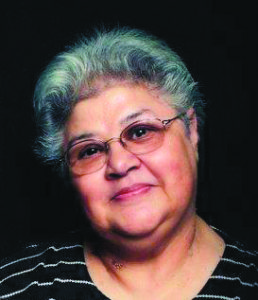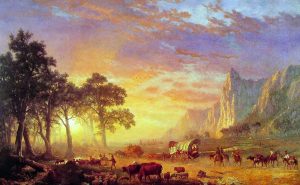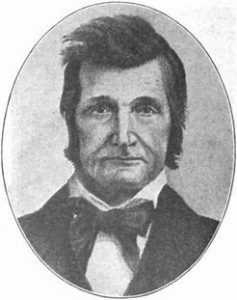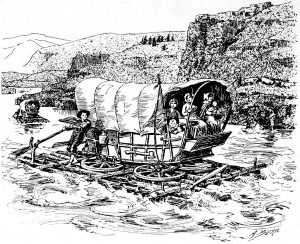

Autumn of 2020 marks the 175th Anniversary of the first attempted crossing of Mt. Hood’s Oregon Trail and the 173rd Anniversary of the first toll road—known as the Barlow Trail—over the Cascade Mountain Range. The Barlow Trail was the final overland link of the Oregon Trail that allowed emigrant travelers a cheaper, quicker but still dangerous alternative to rafting their covered wagons down the Columbia River.
“Oyer-un-gun” was the “Place of Plenty,” according to the Shoshone. “Oregon Fever” and the promise of rich farmlands available by Donation Land Claims, lured thousands of pioneers to the Willamette Valley. By 1844, Oregon City was the seat of the newly-founded American Provisional Government. Anyone wishing to file a land claim had to come to Oregon City.
During the 1830’s and early 1840’s, the Gorge was the most dreaded portion for pioneers who made the trek from “back east” to the fertile farmlands of the Willamette Valley. Prior to 1845, wagons could reach The Dalles, but from there the emigrants had little choice but to make a raft of pine logs, buy a raft from enterprising Indians, or rent a bateaux (a flat-bottomed boat with flaring sides) from the Hudson’s Bay Company for around $80. They would dismantle their wagons, load all their possessions on rafts, and then float the Upper Cascades. Many lives were lost on the Columbia River, the relentless winds overturned many a raft, and there were impassable rapids that had to be portaged. The steep canyon walls rising from the water’s edge and the turbulent rapids at the “dalles” (a French word meaning flagstones) defied passage.

One man particularly angry about high ferryboat prices and the cost of day-to-day supplies at The Dalles was Samuel Kimbrough Barlow. Born in Kentucky on January 24, 1795, Sam Barlow traveled with his wife and four children to Illinois where they joined the migration to Oregon in 1845.

Arriving in the autumn at The Dalles, the Barlow party was faced with the prospect of waiting for a bateaux that was downstream with no scheduled return. Running out of money, food, and patience, Barlow stated that, “God never made a mountain but what He provided a place for man to go over or around it.”
Having seen a notch in the south slope of Mt. Hood, Barlow headed south to find a way around the 11,235-foot Mount Hood, bypassing the Columbia River all together. He was joined by several other parties, including those of Joel Palmer and William Rector. Over 30 wagons made up the first train determined to cross the Cascades before winter snows fell.
Following an ancient Indian path, they began hacking and cutting their way through the forests of Mt. Hood. The thick pine and steep hills proved to be difficult obstacles, but Barlow was indomitable. The parties went south from The Dalles, turning southwest at Tygh Valley. When they reached the present Gate Creek, near Wamic, they turned west. Their path ran through park-like pine forests merged with fir and cedar. The terrain became steeper and full of boulders. The woods became thicker, making difficult going for the lumbering “Prairie Schooners.” Nearing the White River at Klip Creek, they came to a very abrupt decline, which later travelers would call Little Laurel Hill.
Emigrant Sarah Cummins wrote: “The traveling was slow and toilsome; slopes were almost impassible for man and beast. As night was coming on, it seemed we all must perish, but weak, faint and starving we went on. I could scarcely put one foot before another. I weighed less than eighty pounds at the time. My own party had been 14 days with only nine biscuits and four small slices of bacon.”
Next Issue: Building the Road
No Comments
Leave a comment Cancel